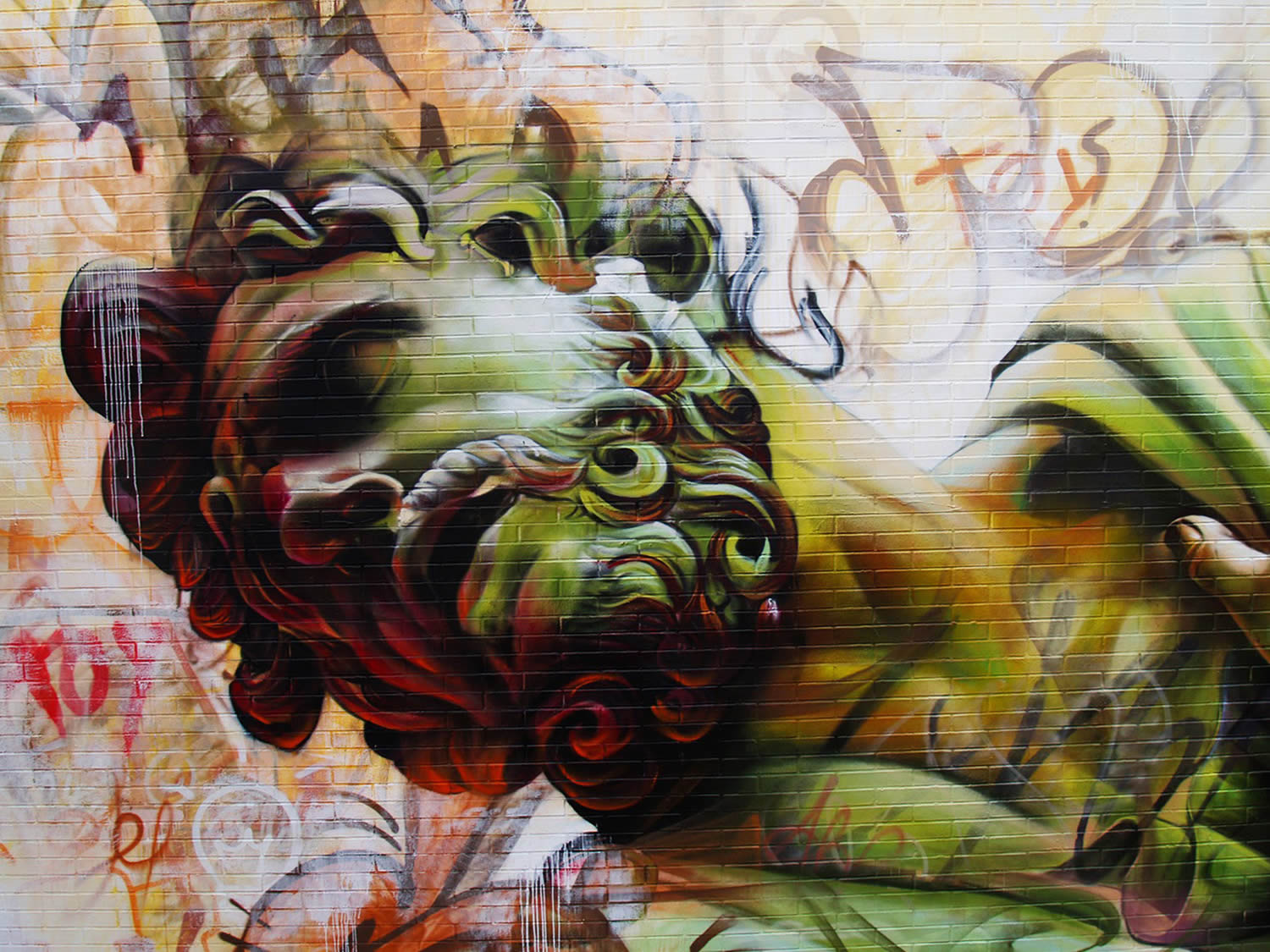For the concrete self living in the concrete world there is nothing but strife, there is nothing ever but strife. This is incongruous news – in one way – because we think that it is good to be the concrete self! We think that this is ‘where it’s at’. Obviously we think this – our whole culture celebrates the concrete self. Daisaku Ikeda says that it is the aim of Western materialist culture to use all its scientific powers and of all the resources of the earth to build palaces dedicated to the state of rapture. ‘Rapture’ – we might say – is the good feeling that comes when the ego is able to expand outwards successfully and take over all the available space. When the ego is able to overcome its enemies then there is rapture. When the ego is able to state its petty ‘truths’ in emphatic and uncompromisingly confident way (and feel in this way vindicated) then this is rapture. When the self is able to achieve what it covets for its very own, then this is rapture. When the rational mind is able to believe that it has everything explained, so that nothing important exists that it does not know about, then this too is rapture…
We could also say therefore that it is the aim of Western materialist culture is to build palaces dedicated to the glorification of the concrete self, and that its unstated goal is for all of us to identify unquestioningly with the concrete self, and this would also be true. Who after all can deny that all the endlessly proliferating media-moderated messages we receive every day are not aimed specifically at the concrete self, and are not targeted specifically at its tremendous insecurity and greed? That’s what consumerism is all about, as we all know very well. ‘Greed is good’, as the famous line in the film Wall Street says. In order for us to get the most out of desire, both in terms of euphoric anticipation of the realization of ultimate goal, and the euphoric vindication/validation that comes when we have obtained it then we have to fully identify with the concrete self. That’s the only way to get the euphoric reward. It’s not so much that greed is good therefore, but that ‘identification with the concrete self is good’, although we don’t have the psychological subtlety to see this, or in any way understand it…
Only the concrete self can experience rapture and so if it is rapture that we want (as we do) then we have to be the concrete self! We have to be the concrete self and any intimations that might come our way that we may perhaps be more than just this (that there might be more some other mode of being) has to be utterly repressed, and this is exactly what happens in this world that we live in. The world that we have created for ourselves in the West is a world that is dedicated exclusively to the concrete self. The ‘Designed World’ exists for the CS, solely for the CS, exclusively for the CS and it most certainly doesn’t exist to nurture or support consciousness in any way – consciousness is the unwanted intruder here, consciousness is the enemy of the concrete self because it allows us to see that this is not who we are. If only we could understand this then we would see in one go exactly what our world is all about, but this is of course precisely the awareness that is being repressed. As Alan Watt says, the big taboo that underlines society is ‘the taboo against knowing who we are’ and this is of course the same thing as ‘the taboo against seeing that the everyday sense-of-self has nothing to do with who we really are’.
We think it is good to be the concrete self but it isn’t good at all because – as we started off by saying – when we are locked into this modality of existence the only future that exists for us is a future of strife. When we are locked into this modality of existence then we are putting all our money on one thing and one thing only; we’re putting all our eggs in the one basket, so to speak, and that basket is the assumption that when we obtain what it is that we want to obtain then this will be a good thing. This is a big fat delusion however – my goal is nothing more than my own unacknowledged projection and so when I successfully bring about the situation that I want so badly to bring about (i.e. when I arrange things so that ‘Actual’ equals ‘Expected’) then I have (without realizing it) created the nullity. I have created an Equilibrium World, I have created a world that has zero information in it, a world that is redundant through and through, and this – and now matter how we look at it – can hardly be said to be ‘a good thing’! How can buying into a world seems to be real but which isn’t ever be ‘a good thing’? Our foolishness is to make it seem like a good thing to be sure but this is an illusion that has ‘two sides to it’ – like all comforting (or ‘pleasure-bringing’) illusions there is the side that we like, and the side that we don’t like, the side that agrees with us and the side that doesn’t agree with us. It is ‘good to the extent that it’s bad’, in other words (or it’s ‘bad to the extent that it’s good’).
This is how the ‘null situation’ of <Actual equals Expected> shows itself therefore – as an oscillation between two poles. It doesn’t honestly manifest itself to us as ‘a wholly redundant situation’; it doesn’t show itself as being ‘the nullity’ – it appears on the contrary be substantial, the all-important catch here being that it is substantial in a ‘self-cancelling’ or ‘conflicted’ way so instead of seeing the nullity for what it is we encounter firstly ‘the side or aspect of the illusion that agrees with us’, and then – following this – we encounter ‘the side or aspect of the illusion that doesn’t agree with us’. There is the euphoric phase and the dysphoric phase. That’s how we perceive the nullity and – needless to say – this doesn’t tip us off in the least bit to the fact that what we are dealing with is a ‘null situation’. That’s not what we take out of it at all. What we are talking about here isn’t particularly hard to understand in itself however – everybody knows that when we are foolish enough to allow ourselves to feel good on the basis of an illusion then we are only setting ourselves up to feel correspondingly bad later on – who doesn’t know this?
Similarly when we allow ourselves to feel secure on the basis of an illusion what we are doing is setting ourselves up to feel correspondingly insecure later on. The more we buy into the comforting illusion in the first (euphoric) phase, the more distressingly insecure we are going to feel in the second phase and when we talk about a sense of ‘intensely distressing insecurity’ what we’re talking about is anxiety. The concrete self (of course) loves to feel secure (feeling secure actually how the CS gets to be the CS) and thus we can also say that ‘the CS loves to feel anxious’, even though it is also true to say that it hates it! This is the self-contradiction right here therefore – ‘love’ and ‘hate’ (or ‘attraction’ and ‘aversion’) are the two sides of the very same illusion, just as pleasure and pain are. If we could see the nullity for what it is then we would see that like and dislike are very same thing; or – to put this the way around – if we could see that like and dislike are the very same thing then we would see the nullity for what it is. We are however very far indeed from seeing that ‘like equals dislike’, or that ‘pleasure equals pain’. Nothing could be more remote (or ‘alien’) for us than the understanding of this particular paradox.
When the Buddha said that humankind’s characteristic suffering-producing activity is akin to the activity of ‘licking honey from razor blades’ it is precisely the unawareness of the self-contradictory (or ‘conflicted’) nature of the concrete self that he was referring to. We can’t see that our love of pleasure is the same thing as our love of pain and we’re not about to see this any time soon! All of our effort and all of our not-inconsiderable ingenuity is directed towards obtaining euphoria (or obtaining security for ourselves, if we want to put it like that instead). The proud emblem of our efforts is modern society, dedicated as it is to building greater and greater palaces dedicated to the state of Rapture. Perhaps in the future the whole world will have been turned into a giant shopping mall – shopping is one of the main ways in which we obtain rapture, after all! The point is this however – all of our rapture-palaces are at the same time ‘palaces of pain’. The temples that we build in the name of euphoria are also temples dedicated to pain and despair. The Designed World is duplex in nature in other words – it is dedicated to despair to the same extent that it is dedicated to euphoria, as curious as this may seem to us. It is extraordinarily rare that we do see this most peculiar thing (as smart as we might think we are), but when we do see it we are bound to ask what exactly this says about us as a civilization…






